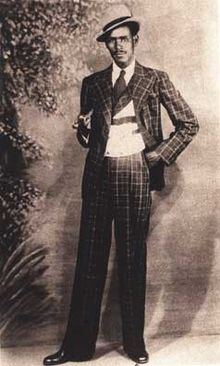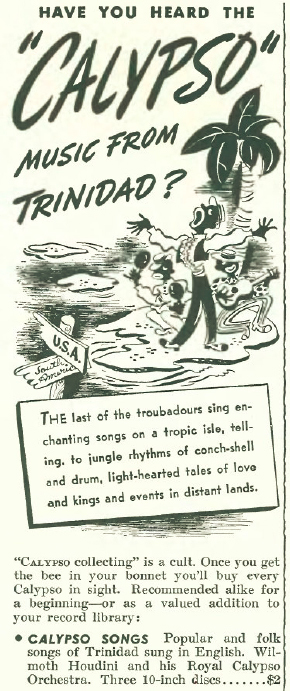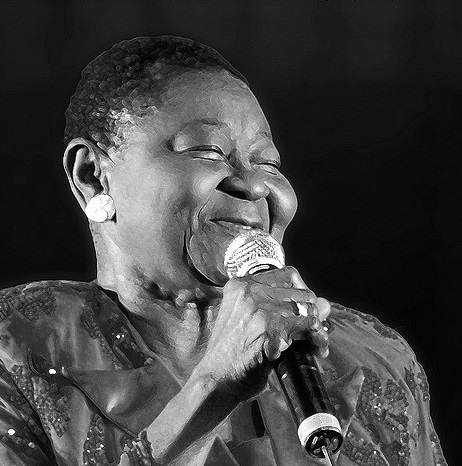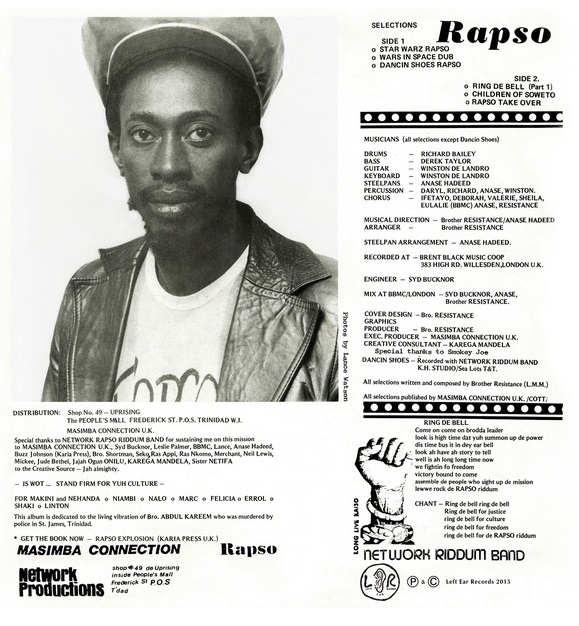Kaiso to Soca: a brief history of Calypso music
Posted: February 8, 2016 Filed under: English | Tags: Black History Month: Calypso music Comments Off on Kaiso to Soca: a brief history of Calypso music
Devon Seale, the 2016 Trinidad Carnival Calypso Monarch, seen performing on Dimanche Gras, February 7th, 2016_photograph by Stephan Doobay for Trinidad Express
CALYPSO: a Brief History
by Philip W. Scher
. . .
CALYPSO is a style of Caribbean music associated with the nation of Trinidad, and is linked to the annual celebration of the pre-Lenten Carnival. The music, as well as the name itself, has a myriad of roots, and although there is no general agreement as to the origin of the term, there are references in Trinidadian newspapers of the nineteenth century to cariso and kaiso, both song forms characterized by the performance of extemporaneous, satirical lyrics. The term kaiso, which was shouted to encourage or praise successful singers, is considered a possible source for the word calypso, and indeed is still used instead of calypso. The cariso is only one of many song forms to emerge from the colonial era in Trinidad. Creole slaves and free Africans contributed a variety of songs and dances, including the bel air (derived from both African and French sources), the juba, the bamboula, the calinda (both a martial art and a song style), and the lavway (a road chant performed during Carnival processions). Combined with these forms were British ballads, French folk songs, Venezuelan string music, and other types of Creole West-Indian songs. As new musical forms were created or introduced to the island—American jazz, Venezuelan paseos, and ultimately such diverse forms as Hindi film music, reggae and dancehall, soul, and rhythm and blues—they were incorporated into Calypso.
.
Trinidad was “opened” by Spain to French colonists first in the later part of the eighteenth century. The French dominated the cultural life of the island up to and even beyond the English conquest in 1797. The French imported their pre-Lenten festival of Carnival, and much of the earliest carnival music was sung in Creole or Patois. During the nineteenth century, English culture, language, and religion increased in importance and influence, and many of the folk musical styles gradually changed from French Creole to English. As the English extended their hegemony over the island, they also embarked on a mission of reforming Carnival. By the 1880s unruly masqueraders and riots against police repression resulted in a massive campaign to control and channel the public celebration into a more structured event. By the early 1900s calypso music, marked lyrically now by social satire, political commentary, humour and sexual innuendo, was largely being performed in “calypso tents,” temporary venues in which calypsonians competed against each other for prizes offered by private sponsors.
.
The first calypso recordings were made in 1914, and by the 1920s and 1930s Trinidad’s finest calypso singers, such as Attila the Hun, Roaring Lion, and Lord Invader, were regularly recording and performing in the U.S.A. “Rum and Coca-Cola”, recorded by the Andrews Sisters in 1944, was a sanitized re-interpretation of a Lord Invader song. It became an American hit, and also spawned a landmark lawsuit by Lord Invader against the American actor Morey Amsterdam, who illegally copyrighted the lyrics. Invader won the suit.
.
Although they faced routine censorship by the British colonial authorities, calypsonians of this period displayed enormous creativity in circumventing restrictions to create songs rife with double-entendre, inside jokes, and subtle parody. Audiences relied on clever calypsonians for insight into the ironies of colonial rule, the hypocrisy of the ruling classes, and the meaning of certain scandals and outrages. Savvy politicians could often “take the temperature” of the public based on the attitudes of their calypsonians.
.
From its earliest days, Calypso music served as a forum for the expression of social and political views within the Caribbean. Remarkably, the criticism mounted by calypsonians was not limited to broad appeals against inequality, racism, poverty, and oppression, but tackled precise laws, domestic policy, proposed legislation, foreign policy, labour relations, actions by public figures, and even speeches given by notable persons. Thus, in addition to humorous rivalries between singers, songs about the beauty of the land, and compositions with a ribald flavour, calypsos were composed with such titles as “Prison Improvement,” “Shop Closing Ordinance,” “The Commissioner’s Report,” “The European Situation,” “Devaluation,” “Slum Clearance,” “Reply to the Ministry,” etcetera.
.
The arrival of indentured labourers from South Asia from the mid-nineteenth century until 1917 changed the ethnic makeup of Trinidad. Competition for work and land created tensions between the island’s Black populace and South Asians that ultimately manifested in political divisions being drawn along ethnic lines. The presence of Indians in Trinidad was closely followed by calypsonians. Initially, many calypsos dealing with Indians discussed “strange” customs, delicious food, and beautiful women. Creole calypsonians often commented in song on how they fell in love with an Indian girl or how they were able to participate in an Indian feast. As political tensions heated up during the 1950s, however, calypsos became more pointedly political. By 1961 the calypsonian Striker, registering his dismay at the deep ethnic division present in local politics, remarked in song that “Negro can’t get a vote from Indian.” Today there are a number of noted Indian calypsonians, both men and women, as well as Black musicians performing in the Indian-influenced genre of chutney soca. Yet tensions between the two communities have been played out musically over the airways and in the calypso tents of Trinidad.
.
Though rebelliousness and resistance could characterize calypso, still there was a strong dose of pro-British patriotism during the two World Wars of the twentieth century. Calypsonians recorded achievements of the British Empire and the royal family, along with all their other social/political and lyrical commentaries. And compositions in favour of the Empire co-existed alongside songs detailing the oppressive conditions under which the populaces of the Empire laboured.

1947 photograph by William P. Gottlieb_probably at the Renaissance ballroom in Harlem_Calypsonians from Trinidad that included Lord Invader, Macbeth the Great, the Duke of Iron, and the Count of Monte Cristo







